t's our friend, Malcolm's, 86th birthday! Many happy returns of the day, Dear One! ![Boyd-prophet-cover[1]](/wp-content/uploads/2009/06/6a00d8345161a069e2011570d9ce8f970b-120wi.jpg)
Category Archives: Gay History
Jesse’s Journal: Stonewall at 40
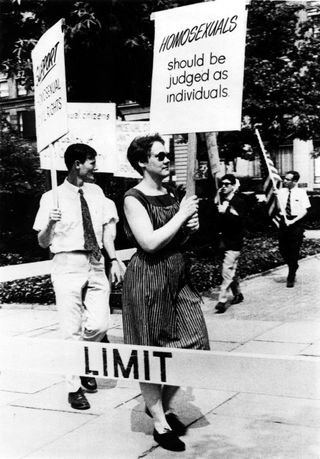 When “Stonewall” took place, I lived in Miami. I was sixteen years old, in high school and uncertain about my future. It wasn’t until I graduated from high school in 1972 that I learned about the events that shook Greenwich Village three years before. By then the event that Martin Duberman (in his 1993 study Stonewall) called “the emblematic event in modern lesbian and gay history,” had already become a symbol of pride and resistance. The late Donn Teal, whose Gay Militants (1971) included the best account of the Riots prior to the one in David Carter’s Stonewall (2004), wrote that Stonewall “jolted awake . . . an only half-remembered outrage against straight society’s bigotries in those older, generally conservative ‘Boys in the Band’ who had been out of town on the weekend of the 27th-28th-29th, tanning their thighs at Cherry Grove and the Hamptons. And, as a slur, it posed a challenge to and goal for those younger . . . gays who’d had to make do with Greenwich Village and who’d seen [the] action. It may have created the gay liberation movement.”
When “Stonewall” took place, I lived in Miami. I was sixteen years old, in high school and uncertain about my future. It wasn’t until I graduated from high school in 1972 that I learned about the events that shook Greenwich Village three years before. By then the event that Martin Duberman (in his 1993 study Stonewall) called “the emblematic event in modern lesbian and gay history,” had already become a symbol of pride and resistance. The late Donn Teal, whose Gay Militants (1971) included the best account of the Riots prior to the one in David Carter’s Stonewall (2004), wrote that Stonewall “jolted awake . . . an only half-remembered outrage against straight society’s bigotries in those older, generally conservative ‘Boys in the Band’ who had been out of town on the weekend of the 27th-28th-29th, tanning their thighs at Cherry Grove and the Hamptons. And, as a slur, it posed a challenge to and goal for those younger . . . gays who’d had to make do with Greenwich Village and who’d seen [the] action. It may have created the gay liberation movement.”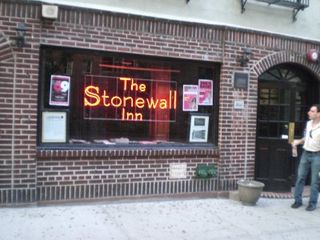 Like any symbolic event, the truth about Stonewall lies hidden in myth and legend. To this day, the Uprising has been attributed to a variety of causes, from the full moon to Judy Garland’s death (her funeral was on the morning before the Riots). Even the names and number of Rioters are in dispute: for example, the transgender activist Sylvia Rivera, who played a mayor role in Duberman’s Stonewall, is absent from Carter’s Stonewall. None of the Rioters – Rivera, Marsha P. Johnson, Jackie Hormona, Zazu Nova or Jim Fouratt, just to name a few – achieved the mythic status given Diego Viñales, the Argentine student who was impaled on a fence while trying to escape the cops in the aftermath of a police raid on the Snake Pit, another Village bar (March 8, 1970). The Stonewall Riots were largely a group effort; and history has kept it that way.
Like any symbolic event, the truth about Stonewall lies hidden in myth and legend. To this day, the Uprising has been attributed to a variety of causes, from the full moon to Judy Garland’s death (her funeral was on the morning before the Riots). Even the names and number of Rioters are in dispute: for example, the transgender activist Sylvia Rivera, who played a mayor role in Duberman’s Stonewall, is absent from Carter’s Stonewall. None of the Rioters – Rivera, Marsha P. Johnson, Jackie Hormona, Zazu Nova or Jim Fouratt, just to name a few – achieved the mythic status given Diego Viñales, the Argentine student who was impaled on a fence while trying to escape the cops in the aftermath of a police raid on the Snake Pit, another Village bar (March 8, 1970). The Stonewall Riots were largely a group effort; and history has kept it that way.The Churches and Marriage Equality
It’s none of your business!
https://youtube.com/watch?v=cI0955I5wXI
…and furthermore…if the churches continue to actively lobby against these particular legislations and participate in the electoral process by taking sides, we need to demand that their nonprofit status be TAKEN AWAY! They have a right to their opinion…but they don't have a right to my tax dollars to promote it.
Oh and by the way…
https://youtube.com/watch?v=03PnU27cWDs
…catchy little tune, huh?
RFD: 35 Years – Remarkably Festive Divas
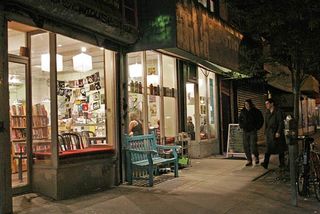
Join the NYC Circle of Radical Faeries for an evening of readings, ritual, high drag and magic! Celebrate the 35th anniversary of RFD,
the digest of the Radical Faerie community.
Saturday, May 30th at BLUESTOCKINGS
6:00 PM Meet, Greet, Drum and Chant
7:00 PM Readings…and…
DRESS WITCHIE!
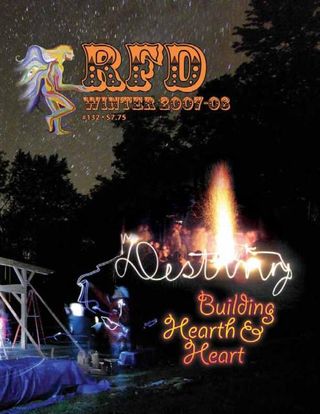 The current issue explores the relationship between the Radical Faerie's ritual practices and Starhawk's Reclaiming Collective. It includes articles on the life of Faeries and Witches in the 1970', 80's and 90's
The current issue explores the relationship between the Radical Faerie's ritual practices and Starhawk's Reclaiming Collective. It includes articles on the life of Faeries and Witches in the 1970', 80's and 90's
as well as meditations on the current practice of Faerie Ritual. Rare back copies from the last 35 years of quarterly publication will also be available for sale.
BLUESTOCKINGS
a bookstore, fair trade cafe, and activist center
in the Lower East Side of Manhattan.
172 Allen St.
New York, NY 10002
212.777.6028
Directions:
Bluestockings is located in the Lower East Side of Manhattan at 172 Allen Street between Stanton and Rivington, one block south of Houston and First Avenue.
By train: F train to 2nd Ave , exit at 1st Ave , and walk one block south.
By car: If you take the Houston exit off of the FDR, then turn left onto Essex
(a.k.a. Avenue A), then right on Rivington, and finally right on Allen, you will
be very, very close.
Dissent
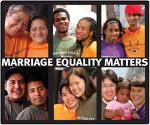 Lest the news of Proposition 8 be the ultimate buzz kill for today (which it sort of is), it's worth reading the opinion from California Supreme Court Justice Carlos Moreno, who was the only judge dissenting in today's 6-1 decision upholding Proposition 8. Moreno, who was actually rumored to be on Obama's shortlist for the open Supreme Court vacancy that this morning went to Sonia Sotomayor, had this to say:
Lest the news of Proposition 8 be the ultimate buzz kill for today (which it sort of is), it's worth reading the opinion from California Supreme Court Justice Carlos Moreno, who was the only judge dissenting in today's 6-1 decision upholding Proposition 8. Moreno, who was actually rumored to be on Obama's shortlist for the open Supreme Court vacancy that this morning went to Sonia Sotomayor, had this to say:
In my view, the aim of Proposition 8 and all similar initiative measures that seek to alter the California Constitution to deny a fundamental right to a group that has historically been subject to discrimination on the basis of a suspect classification, violates the essence of the equal protection clause of the California Constitution and fundamentally alters its scope and meaning. Such a change cannot be accomplished through the initiative process by a simple amendment to our Constitution enacted by a bare majority of the voters; it must be accomplished, if at all, by a constitutional revision to modify the equal protection clause to protect some, rather than all, similarly situated persons. I would therefore hold that Proposition 8 is not a lawful amendment of the California Constitution.
It's nice to know that at least one Judge has his wits about him.
Proposition 8 contradicts California's equal protection clause.
Rodger McFarlane – R.I.P.
The following statement was released by friends and family of Rodger McFarlane today:
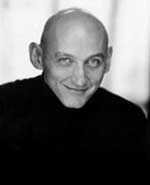 New York, Monday, May 18, 2009 – It is with deep sadness that we announce the death of our friend, colleague, and hero, Rodger McFarlane. A pioneer and legend in the lesbian, gay, bisexual and transgender (LGBT) civil rights and HIV/AIDS movements, Rodger took his own life in Truth or Consequences, New Mexico last Friday. In a letter found with his remains, Rodger explained that he was unwilling to allow compounding heart and back problems to become even worse and result in total debilitation. We know that Rodger was in a great deal of pain. Already disabled in his own mind, he could no longer work out or do all the outdoor activities he so loved. He was also now faced with the realization that he could literally not travel, making employment increasingly difficult. As his friends and family, we thought it was important that we communicate to the world that it has lost an amazingly wonderful individual who contributed so mightily to our humanity.
New York, Monday, May 18, 2009 – It is with deep sadness that we announce the death of our friend, colleague, and hero, Rodger McFarlane. A pioneer and legend in the lesbian, gay, bisexual and transgender (LGBT) civil rights and HIV/AIDS movements, Rodger took his own life in Truth or Consequences, New Mexico last Friday. In a letter found with his remains, Rodger explained that he was unwilling to allow compounding heart and back problems to become even worse and result in total debilitation. We know that Rodger was in a great deal of pain. Already disabled in his own mind, he could no longer work out or do all the outdoor activities he so loved. He was also now faced with the realization that he could literally not travel, making employment increasingly difficult. As his friends and family, we thought it was important that we communicate to the world that it has lost an amazingly wonderful individual who contributed so mightily to our humanity.
Rodger approached every aspect of his life with boundless passion and vigor. While many people go their entire lives wanting to be good at just one thing, Rodger excelled at virtually everything he did. Brilliant activist and strategist, decorated veteran, accomplished athlete, best-selling author, and humanitarian are just a few of the accolades that could be used to describe our friend. To know Rodger was to love an irreverent, wise-cracking Southerner who hardly completed a sentence that didn’t include some kind of four-letter expletive. He fought the right fight every day, was intolerant of silence, and organized whole communities of people to advocate for justice. These were traits that endeared him to us and are traits that make his legacy incredibly rich and powerful.
The power of Rodger’s many personal and professional accomplishments cannot be denied. He was on the forefront of responding to the AIDS epidemic that ravaged our country – and specifically the gay community – in the 1980’s. Before HIV even had a name, in 1981, Rodger set up the very first hotline anywhere; he just set it up on his own phone. That was the Rodger we knew. A born strategist and leader, Rodger took three organizations in their infancy and grew each into a powerhouse in its own way, empowered to tackle this national tragedy.
One of the original volunteers and the first paid executive director of Gay Men’s Health Crisis, the nation’s first and largest provider of AIDS client services and public education programs, Rodger increased the organization's fundraising from a few thousand dollars to the $25 million agency it is today. Until his death, he was the president emeritus of Bailey House, the nation's first and largest provider of supportive housing for homeless people with HIV.
From 1989 to 1994, he was executive director of Broadway Cares/Equity Fights AIDS (BC/EFA), merging two small industry-based fundraising groups into one of America's most successful and influential AIDS fundraising and grant-making organizations. During his tenure at BC/EFA, annual revenue increased from less than $1 million to more than $5 million, while also leveraging an additional $40 million annually through strategic alliances with other funders and corporate partnerships. Rodger was also a founding member of ACT UP – NY, the now legendary protest group responsible for sweeping changes to public policy as well as drug treatment and delivery processes.
Most recently, Rodger served as the executive director of the Gill Foundation, one of the nation’s largest funders of programs advocating for LGBT equality. He transformed the Foundation by sharpening its strategic purpose. He focused its philanthropy in the states, aligned its investment with political imperatives and forged relationships with straight allies that helped to further both the LGBT movement as well as the greater progressive movement. Rodger was instrumental in the creation of the Gill Foundation’s sister organization, Gill Action. The brilliance of Rodger’s vision is being seen today as important protections for LGBT people become a reality in more and more states.
No one will ever doubt that our friend Rodger lived a rich and complete life. A proud U.S. Navy veteran, Rodger was a licensed nuclear engineer who conducted strategic missions in the North Atlantic and far Arctic regions aboard a fast attack submarine. A gifted athlete, he was a veteran of seven over-ice expeditions to the North Pole. He also competed internationally for many years as an elite tri-athlete, and in 1998 and 2002, competed in the Eco-Challenges in Morocco and Fiji, where he captained an all-gay female-majority team.
In spite of the fact that Rodger never completed college, he was an accomplished and best-selling author and the producer of works for the stage. Rodger was the co-author of several books, including The Complete Bedside Companion: No Nonsense Advice on Caring for the Seriously Ill (Simon & Schuster, 1998), and most recently, Larry Kramer’s The Tragedy of Today’s Gays (Penguin, 2005). In 1993, he co-produced the Pulitzer Prize-nominated production of Larry Kramer’s The Destiny of Me, the sequel to The Normal Heart.
Rodger had a reputation as a hard-ass. That reputation didn’t do him justice. Many of us will remember Rodger as a caregiver, a man who nursed countless friends and family members battling cancer and AIDS. He was the most compassionate and giving of friends, especially to those in physical or emotional distress.
His many achievements were recognized throughout his life. Most recently, he had received the Patient Advocacy Award from the American Psychiatric Association. Other honors included the New York City Distinguished Service Award, the Presidential Voluntary Action Award, the Eleanor Roosevelt Award, and the Emery Award from the Hetrick Martin Institute, as well as Tony and Drama Desk honors.
How do you sum up someone’s life in just a few words? It’s impossible and you can’t. To commemorate Rodger’s life, his friends will organize celebrations of his, the details of which are still in the planning stages. If Rodger was anything, he was a character through and through; there are, quite literally, thousands of “Rodger stories.” That’s part of what made him such a special person. During our celebrations, we’ll share some of these stories and reflect on the many legacies left by our friend for life, Rodger McFarlane.
Information on donations in memorial will also be forthcoming.
History…History…History…
It's Monday.
It's raining. I'm going to be lazy and put up this lovely video with it's gorgeous music (from Hans Zimmer's The DaVinci Code score). Enjoy:
National Award for Arts Writing Winners
Kim Roberts, a frequent contributor and reviewer of books for White Crane, sent us this notice of two new books that have received laurels:
The Arts Club of Washington has announced the winners of the third annual National Award for Arts Writing. The $15,000 Award, although relatively new, has one of the largest purses of any annual book award in the U.S., and is the only award for non-fiction books on the arts for a general audience.
Winners must be living American authors, and books must be published in the U.S. in the previous year. The award honors and encourages excellence in writing (“prose that is lucid, luminous, clear and inspiring”) and can be on any artistic discipline. Considering how jargon-laden much arts writing has become in recent years (particularly writing about the visual and literary arts), this emphasis on a general, rather than specialist, audience is refreshing. The award goes to books that help readers build a strong connection with arts and artists.
For the first time in the Award’s history, there are two winners, and the books make a fascinating study in contrasts. The winners are:
Michael Sragow, for
Victor Fleming: An American Movie Master (Pantheon Books)
and
Brenda Wineapple, for
White Heat: The Friendship of Emily Dickinson & Thomas Wentworth Higginson (Knopf)
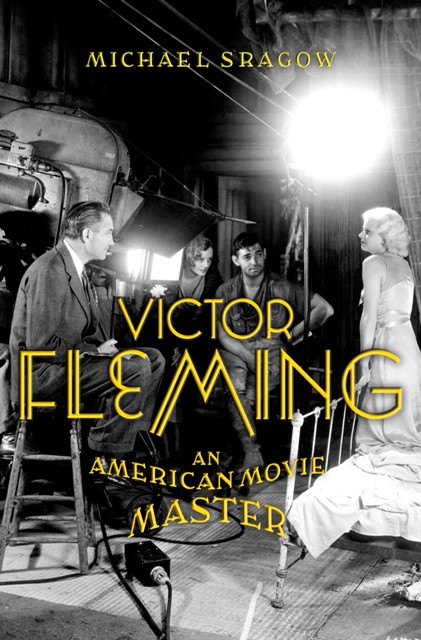 Fleming was the movie director best known for Gone With the Wind and The Wizard of Oz, and Sragow’s book is the first full-length
Fleming was the movie director best known for Gone With the Wind and The Wizard of Oz, and Sragow’s book is the first full-length  biography of this fascinating man. Some of the strongest writing in the book describes how Fleming developed screen personas for such leading men as Clark Gable, Spencer Tracy, and Gary Cooper, often based on his own experiences. Sragow argues that Fleming developed characters of idealized American masculinity, creating a new definition for a “strong, silent type” who was forceful, charismatic, and vigorous.
biography of this fascinating man. Some of the strongest writing in the book describes how Fleming developed screen personas for such leading men as Clark Gable, Spencer Tracy, and Gary Cooper, often based on his own experiences. Sragow argues that Fleming developed characters of idealized American masculinity, creating a new definition for a “strong, silent type” who was forceful, charismatic, and vigorous.
He writes, “The stars he helped create have never stopped hovering over the heads of Hollywood actors, who still try to emulate their careers, or of American men in general, who still try to live up to their examples. The director’s combination of gritty nobility and erotic frankness and his ability to mix action and rumination helped mint a new composite image for the American male. Fleming’s big-screen alter egos melded nineteenth-century beliefs in individual strength and family with twentieth-century appetites for sex, speed, and inner and outer exploration. His heroes were unpretentious, direct, and honest, though not sloppily self-revealing.”
![BrendaWIneapple_by_Joyce_Ravid[1]](/wp-content/uploads/2009/04/6a00d8345161a069e201156f6717d1970c-120wi.jpg)
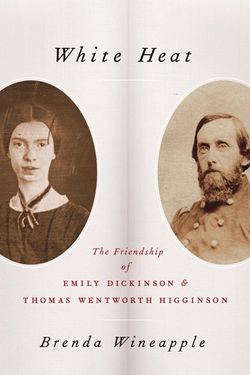 Wineapple’s book, in contrast, captures something of Emily Dickinson’s elusive spirit, as she initiated and sustained a friendship with Thomas Wentworth Higginson, her long-time confidant. Wineapple argues that Dickinson cannily sensed that he would be a sympathetic reader, because Higginson, a former pastor who frequently wrote for The Atlantic Monthly, was also outspoken on issues of abolition of slavery and women’s rights. She was also befriending the man who would later make the posthumous publication of her poems possible.
Wineapple’s book, in contrast, captures something of Emily Dickinson’s elusive spirit, as she initiated and sustained a friendship with Thomas Wentworth Higginson, her long-time confidant. Wineapple argues that Dickinson cannily sensed that he would be a sympathetic reader, because Higginson, a former pastor who frequently wrote for The Atlantic Monthly, was also outspoken on issues of abolition of slavery and women’s rights. She was also befriending the man who would later make the posthumous publication of her poems possible.
On the selection of the two winners, judge David Kipen says, “The idea of the passionate but chaste Emily Dickinson on a blind date with Byronic, swashbuckling Victor Fleming, if only for one night, encompasses precisely the breadth of inspiration that these awards exist to honor.”
The Arts Club of Washington will begin accepting books published in 2009 in June for consideration for the next award. There is no entry fee. Publishers, agents, or authors may submit books; three copies of each book and the official entry form are required. The deadline for the next award is October 1, 2009. Full guidelines and entry forms may be found at: http://www.artsclubofwashington.org/award.html.
Kim Roberts is the administrator for the National Award for Arts Writing. She previously wrote about Emily Dickinson’s Herbarium for White Crane (Issue #73).
